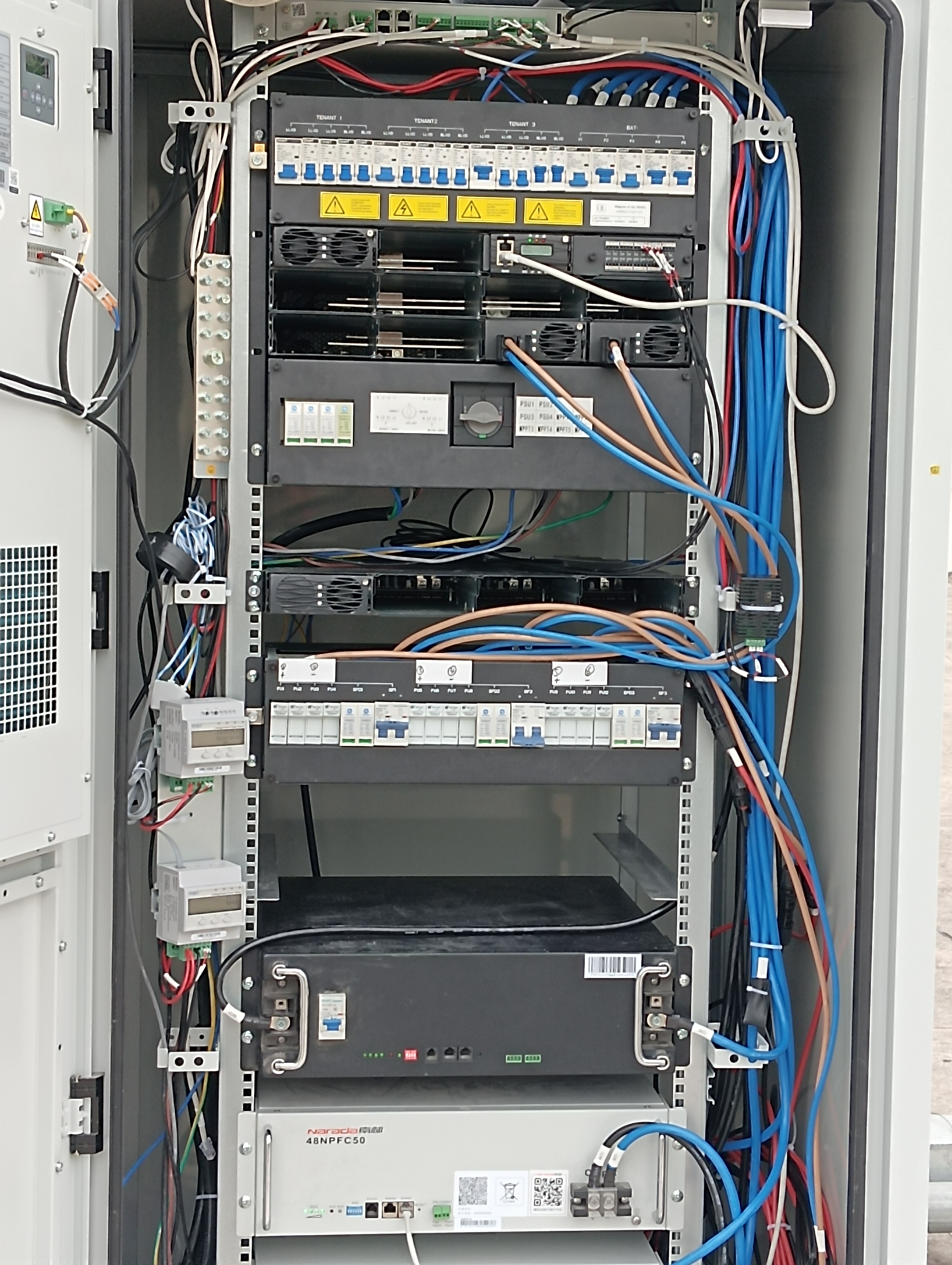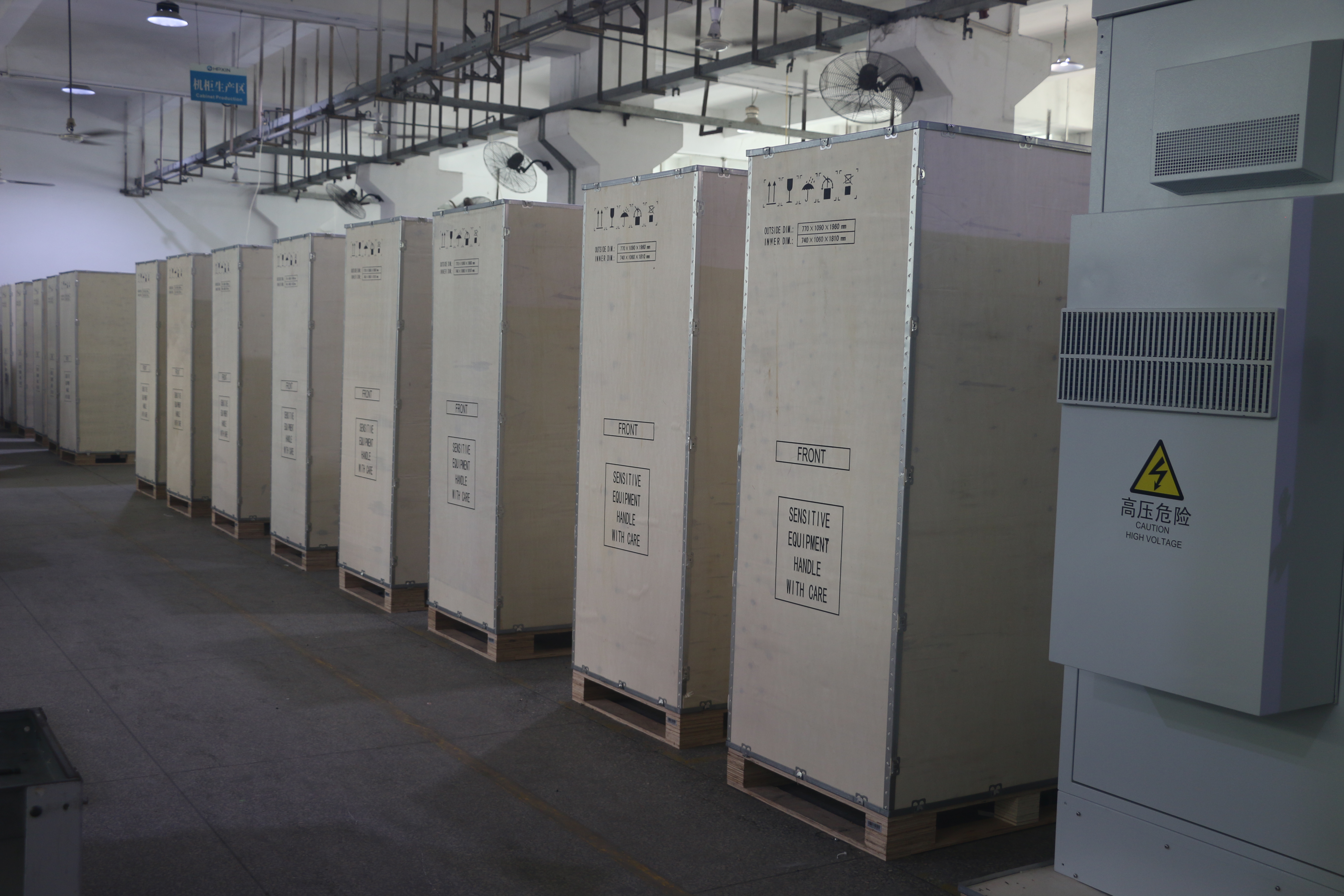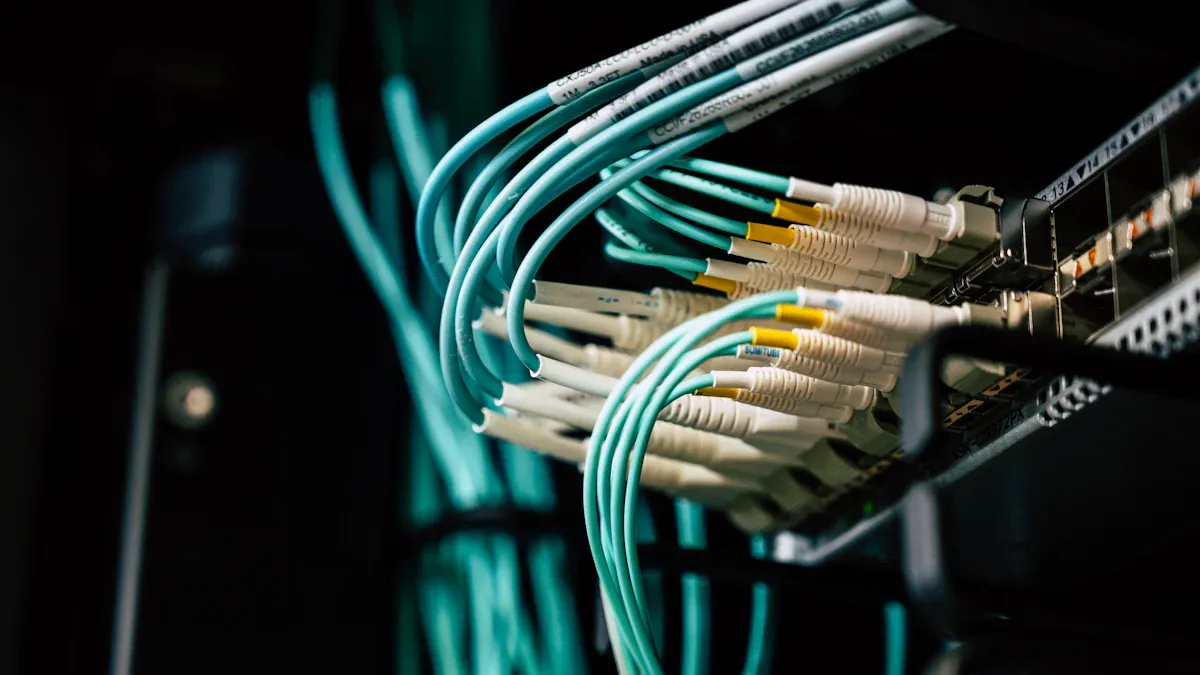5 Reliable Sensors Making ESTEL Telecom Cabinets Smarter

Temperature and humidity sensors ensure precise climate control, with accuracy up to ±0.3°C and 0.1°C resolution, protecting your equipment from heat and moisture.
Door sensors log every access and send instant alerts if someone tries to open the cabinet without permission, boosting your security.
Smoke sensors detect microscopic particles before visible smoke forms, giving you early warnings that prevent fire damage.
Airflow sensors monitor cooling performance, offering ±3% accuracy in airflow measurement and helping you spot hot spots quickly.
Power failure sensors use backup systems for continuous monitoring, reducing unintentional outages by 15% and keeping your cabinet online.
With these sensors, you can achieve a 20% increase in equipment uptime and respond to maintenance needs 40% faster.
Key Takeaways
Temperature and humidity sensors protect telecom equipment by detecting heat and moisture early, reducing downtime and maintenance costs.
Door sensors boost security by tracking access and sending instant alerts for unauthorized openings, helping prevent theft and damage.
Smoke sensors provide early fire warnings by detecting tiny particles, allowing quick response to avoid equipment loss and network disruption.
Airflow sensors monitor cooling performance to spot hot spots and airflow issues, improving equipment lifespan and energy efficiency.
Power failure sensors detect power interruptions and send real-time alerts, reducing outages and supporting continuous cabinet operation.
1. Temperature & Humidity Sensors

Overview
Temperature and humidity sensors play a vital role in keeping your telecom cabinets safe and efficient. You often find dual sensors, such as the D-Wire or Temp & Humidity Sensor G2, in modern setups. These devices monitor both temperature and humidity at multiple points inside the cabinet. This approach, called thermal mapping, helps you spot hot spots and moisture risks quickly.
Here is a quick look at the key technical specifications for widely used sensors:
Specification | Details |
|---|---|
Relative Humidity Range | 10% RH to 90% RH |
Relative Humidity Accuracy | ±3% RH |
Temperature Range | -23°F to +131°F (-5°C to +55°C) |
Temperature Accuracy | ±0.54°F (±0.3°C) |
Input Voltage Range | 10 to 28 VDC |
Current Draw | 4 mA |
Dimensions | 80 mm x 80 mm x 26 mm |
Weight | 8 oz max |
These sensors support remote monitoring through protocols like BACnet, ModBus, and SNMP. You can receive alerts via SNMP, SMS, or email if the environment changes suddenly.
Role
You use temperature and humidity sensors to detect environmental threats before they cause damage. By placing sensors near heat sources and airflow paths, you get accurate readings of the cabinet’s internal climate. Real-time alerts let you respond quickly to overheating, moisture ingress, or air conditioning failures. For example, a sudden rise in humidity might mean a door was left open during rain, while a temperature spike could signal a failing fan.
Proper sensor placement and regular calibration help you maintain reliable monitoring and avoid false alarms.
Benefits
Reduce downtime by up to 25% through early detection of heat and moisture risks.
Lower maintenance costs by up to 40% with predictive maintenance.
Improve energy efficiency by up to 30% by optimizing cooling and airflow.
Prevent equipment damage from overheating, condensation, and corrosion.
Enhance safety and reliability, leading to better customer satisfaction.
You gain real-time insights, faster response times, and a safer environment for your telecom equipment. These sensors make proactive maintenance possible, helping you avoid costly repairs and service interruptions.
2. Door Sensors
Overview
Door sensors give you a reliable way to monitor access to your telecom cabinets. You can choose between wired magnetic contact sensors and wireless models. Wired sensors use a magnet and a switch to detect when the cabinet door opens or closes. Wireless options send signals to your monitoring system without the need for extra cabling. Both types work well in harsh environments and provide consistent performance.
Role
You use door sensors to track every time someone opens a cabinet. These devices help you know who accessed the equipment and when. You can connect them to your remote monitoring system for real-time updates. If someone tries to open a cabinet without permission, the system sends you an instant alert. This feature helps you respond quickly to security threats and unauthorized access.
Door sensors form the first line of defense for your telecom infrastructure. They help you prevent theft, tampering, and accidental damage.
Benefits
You gain several advantages by integrating door sensors with alert and remote monitoring systems:
Detect unauthorized access and trigger instant alerts, so you can act fast to prevent theft or tampering.
Check cabinet status from any location, which reduces the need for site visits and speeds up problem resolution.
Receive timely notifications that support proactive maintenance and help prevent network downtime.
Automate responses and manage multiple cabinets from a single platform, thanks to IoT integration.
Improve security, asset management, and network reliability with real-time data.
A real-world example shows that instant alerts from door sensors allowed a telecom company to dispatch security quickly, stopping theft and avoiding service interruptions. By using these sensors, you protect your equipment and keep your network running smoothly.
3. Smoke Sensors
Overview
Smoke sensors give you a critical layer of protection inside your telecom cabinets. These devices detect the earliest signs of fire by sensing microscopic particles in the air. You can choose from different types, such as ionization, photoelectric, or combination detectors. Each type targets specific fire risks, like fast-flaming or slow-smoldering fires. Most telecom operators prefer wired smoke detectors because they draw power directly from the cabinet’s electrical system, which means you do not have to worry about battery failures.
Proper installation and regular maintenance keep your smoke sensors reliable and reduce false alarms.
Role
You use smoke sensors to spot fire hazards before they become disasters. By placing detectors near potential ignition sources, you get fast alerts if smoke appears. These sensors connect to your centralized monitoring system, so you receive instant notifications on your phone or computer. This setup lets you act quickly, sending technicians to check the cabinet before equipment gets damaged. You also meet safety codes and protect your network infrastructure.
Benefits
Early fire detection gives you time to respond before equipment suffers damage.
Different detector types let you match the sensor to your cabinet’s fire risks.
Wired models offer continuous power, so you avoid missed alarms due to dead batteries.
Advanced technology reduces false alarms by telling real threats from harmless changes.
Integration with your monitoring system means you get fast, coordinated alerts.
Durable designs and LSZH cables keep sensors working in harsh outdoor conditions.
Regular testing and cleaning ensure reliable performance year-round.
Real-world cases show that early detection systems cut financial losses and downtime after fires.
When you install smoke sensors in your telecom cabinets, you protect your equipment, maintain business continuity, and keep your network safe.
4. Airflow Sensors

Overview
Airflow sensors help you monitor the movement of air inside your telecom cabinets. Devices like the UAS1000 EF measure air velocity with high accuracy. You can install these sensors at key points to track how well your cooling system works. Many setups use thermal mapping, which gives you a detailed view of temperature distribution. This approach helps you spot hot spots and airflow blockages before they cause problems.
Airflow sensors work best when you combine them with temperature and humidity monitoring. This combination gives you a complete picture of your cabinet’s environment.
Role
You use airflow sensors to ensure that your equipment receives proper cooling. These devices provide real-time data on air movement, so you can detect changes quickly. If a fan slows down or a vent gets blocked, the sensor alerts you right away. You can then take action before your equipment overheats. Thermal mapping lets you see exactly where airflow drops or heat builds up. This information supports predictive maintenance and helps you avoid unexpected failures.
Air velocity sensors and thermal mapping give you early warnings about overheating and hot spots.
Real-time alerts help you respond fast to cooling issues.
You can track airflow trends over time to spot gradual changes.
Benefits
You gain several advantages by using airflow sensors in your telecom cabinets:
Optimize cooling efficiency and reduce power consumption.
Extend the lifespan of your equipment by preventing overheating.
Lower maintenance costs through predictive maintenance.
Improve operational reliability with rapid response to airflow issues.
Reduce downtime by catching problems before they escalate.
Advanced thermal management systems use precise sensors to monitor both temperature and airflow. This setup allows you to maintain optimal conditions, reduce the risk of equipment failure, and keep your network running smoothly.
5. Power Failure Sensors
Overview
Power failure sensors help you keep your telecom cabinets running smoothly. These devices monitor the power supply and detect any interruptions or fluctuations. You can install them directly inside your cabinets to track voltage, current, and backup battery status. Many models connect to remote monitoring systems, so you receive instant alerts if the power drops or fails. You can rely on these sensors to provide continuous oversight, even during storms or grid outages.
Role
You use power failure sensors to spot problems before they cause downtime. When the sensor detects a power loss or abnormal voltage, it sends a real-time alert to your dashboard or mobile device. This quick notification lets you act fast to switch to backup power or schedule repairs. You can also set threshold notifications, so you know when the power supply gets close to a critical level. By combining these sensors with temperature and humidity monitoring, you create a complete protection system for your equipment.
Power failure sensors give you the ability to respond to issues immediately, reducing the risk of unexpected outages.
Benefits
You gain several important advantages by using power failure sensors in your telecom cabinets. The table below highlights key benefits, supported by real-world data:
Benefit Category | Description | Supporting Data / Example |
|---|---|---|
Improved Reliability | Real-time monitoring and alerts enhance network uptime and service quality. | IBM achieved 30% energy savings; NYC Underground Power Network reported enhanced reliability. |
Reduced Downtime | Predictive maintenance and early detection reduce outages and maintenance costs. | 15% reduction in outages; 20% improvement in equipment uptime; 30% lower maintenance costs. |
Energy Savings | Monitoring power usage and load balancing optimize energy consumption. | U.S. General Services Administration saved $13.5M annually with 41% energy savings. |
Operational Efficiency | Centralized dashboards and customizable alerts improve management and response times. | Remote monitoring reduced site visits from 4 to 1 per year in a remote Alaska telecom site. |
Equipment Protection | Sensors detect power fluctuations and environmental conditions to prevent damage and failures. | Battery failure rates decreased by 98% between 2018 and 2024; threshold alerts prevent overloads. |
You can see that these sensors not only protect your equipment but also help you save money and improve operational efficiency. Real-time monitoring and predictive maintenance keep your network reliable, even in remote or harsh environments.
Comparing Sensors
Features Table
You want to choose the right sensor for your telecom cabinet. The table below compares the main features, reliability, accuracy, and integration options for each sensor type. This helps you see which sensor fits your needs best.
Sensor Type | Reliability Features | Accuracy / Reliability Highlights | Integration Capabilities |
|---|---|---|---|
Temperature & Humidity | Durable metal housing, fast response, dual measurement | ±2% to ±3% humidity, NIST traceable calibration | Works with base units, wireless gateways, server software |
Airflow | Continuous monitoring, robust design | Precise, configurable | Supports multiple inputs, wireless options |
Door Sensors | Security-focused, simple mechanism | N/A | Connects to access control and security systems |
Power Failure Sensors | Monitors voltage, current, backup status | N/A | Integrates with power monitoring and PDU systems |
Smoke Sensors | Early fire detection, wired for reliability | N/A | Connects to monitoring systems (limited data) |
Note: Some sensors, like smoke and power failure sensors, focus more on reliability and integration than on measurement accuracy.
Advantages
You gain several advantages by using these sensor types together in your telecom cabinets:
Early Threat Detection
You spot problems like overheating, water leaks, or unauthorized access before they cause damage. This keeps your equipment safe and your network running.Easy Integration
Most sensors connect to your existing monitoring platforms. You get real-time alerts and data visualization, which makes management simple.Regulatory Compliance
You meet industry standards such as RoHS and EN60529. These standards require you to monitor temperature, humidity, and access for safety and reliability.Reduced Downtime
You respond faster to issues. Real-time alerts help you fix problems before they lead to outages.Longer Equipment Life
Good sealing, insulation, and regular sensor maintenance prevent water intrusion and corrosion. This extends the lifespan of your telecom equipment.
Regular testing and maintenance keep your sensors reliable. Well-designed cabinets with surge protection and tamper-proof locks further reduce the risk of failure.
Smarter Cabinet Integration
Monitoring
You can achieve smarter cabinet integration by connecting multiple sensor types to a centralized monitoring platform. This setup gives you a real-time view of your cabinet’s environment and security. Modern solutions let you track temperature, humidity, air quality, electrical current, and security status from one dashboard. You receive instant alerts if any parameter moves out of range, so you can act before problems escalate.
Here is a table that shows how different sensor types integrate and improve operational visibility:
Sensor Type | Description & Integration | Operational Benefits & Improvements in Visibility |
|---|---|---|
Temperature | Monitors internal cabinet temperature; often combined with humidity and leak detection | Early detection of overheating, rapid alerts on cooling failures |
Humidity | Tracks moisture to prevent corrosion and static discharge | Enables proactive HVAC adjustments, reduces risk of equipment failure |
Air Quality | Detects dust and contaminants | Alerts for filter replacement, maintains airflow and performance |
Current | Monitors electrical flow for short circuits or overloads | Early fault detection, prevents power supply failures |
Proximity & Security | Detects presence, monitors door status and vibration | Enhances security, reduces risk of theft and data breaches |
Multisensors | Combines several sensing technologies in one device | Simplifies installation, provides a holistic real-time cabinet view |
IoT-enabled Platforms | Connects all sensors to a central system for remote monitoring and real-time alerts | Improves visibility, enables proactive maintenance, reduces inspections |
Tip: Choose multisensors and IoT-enabled platforms for the easiest integration and the broadest coverage.
Efficiency
You boost efficiency by integrating these monitoring tools into your cabinet management. Industry benchmarks show that combining temperature, humidity, airflow, and security sensors leads to comprehensive environmental control. You can identify hot spots, detect leaks, and spot unauthorized access quickly.
Place sensors in key locations to measure temperature, humidity, airflow, and pressure accurately.
Use DCIM software to analyze trends, set thresholds, and plan capacity.
Optimize cooling and airflow to reduce energy waste and maintain equipment reliability.
Scale your monitoring system easily with modular and customizable cabinet designs.
Take advantage of smart sensors for remote diagnostics, which cut maintenance costs and downtime.
Enhanced security features, like intrusion detection, protect your equipment and data.
Modular designs support future upgrades, so you can add new technologies as needed.
Note: You avoid common installation challenges by choosing bus-powered, daisy-chainable sensors that support multiple protocols. This approach saves time, reduces wiring complexity, and ensures compatibility with your monitoring system.
You gain significant advantages by using these five devices in ESTEL telecom cabinets. They help you reduce downtime, improve uptime, and cut energy costs. You also benefit from faster incident response and easier maintenance.
Industry experts recommend these steps for smarter cabinet operations:
Specify cabinets with built-in temperature, humidity, power, and intrusion detection.
Use remote monitoring for real-time alerts and preventive maintenance.
Choose modular designs for future upgrades and active cooling for resilience.
Organize layouts for easier technician access and faster service.
ROI Aspect | Description | Impact Example |
|---|---|---|
Downtime Reduction | Predictive maintenance lowers system downtime | |
Uptime Improvement | Enhanced reliability with sensor data | 20% better uptime |
Energy Savings | Smart power optimization | Up to 20% energy savings |
Automation Benefits | Automated alerts and ticketing reduce manual effort | 58% less manual triage |
Sector-specific ROI | Tangible financial returns in remote management | 150% ROI in first year |
Consider upgrading your cabinets with these features to boost reliability and efficiency.
FAQ
What is the most important sensor for telecom cabinets?
You should prioritize temperature and humidity sensors. These sensors protect your equipment from heat and moisture. They help you avoid costly downtime and damage.
How often should you test or calibrate your sensors?
You should test and calibrate your sensors every six months. Regular checks ensure accurate readings and reliable alerts. This practice keeps your monitoring system effective.
Can you integrate these sensors with existing monitoring systems?
Yes, you can connect most sensors to your current monitoring platforms. Many support standard protocols like SNMP or ModBus. This integration gives you real-time alerts and easy management.
Do wireless sensors work as reliably as wired ones?
Wireless sensors offer flexibility and easy installation. Wired sensors provide more consistent performance in harsh environments. You should choose based on your cabinet’s location and security needs.
What should you do if a sensor triggers an alert?
You should investigate the alert immediately. Check the sensor’s location and the equipment nearby. Quick action helps you prevent equipment failure or security breaches.
See Also
How Custom ESTEL Cabinets Ensure Outdoor Telecom Safety
Best Materials Used In ESTEL Telecom Cabinets For 2025
Choosing Energy Storage Batteries For ESTEL Telecom Units
CALL US DIRECTLY
86-13752765943
3A-8, SHUIWAN 1979 SQUARE (PHASE II), NO.111, TAIZI ROAD,SHUIWAN COMMUNITY, ZHAOSHANG STREET, NANSHAN DISTRICT, SHENZHEN, GUANGDONG, CHINA


